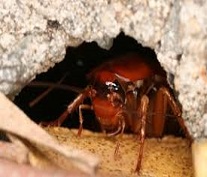Roaches, also known as cockroaches, are insects belonging to the order Blattodea. They are known for their resilience, adaptability, and ability to survive in a wide range of environments. Roaches are commonly found in homes, restaurants, and other buildings, and they can be a nuisance and potential health hazard due to their unsanitary habits and ability to spread diseases.
Here are five effective ways to kill roaches:
1. Keep a clean environment: Roaches are attracted to food crumbs, spills, and unclean areas. Regularly clean your home, especially the kitchen, by sweeping, mopping, and wiping surfaces to eliminate potential food sources. Ensure that trash is properly sealed and promptly removed from your home.
2. Use bait stations: Bait stations are an effective method for killing roaches. These stations contain poison that attracts the roaches. The roaches feed on the poison and carry it back to their nests, where it spreads, ultimately exterminating the colony. Place the bait stations in areas where roaches are frequently seen, such as along baseboards, behind appliances, and in cabinets.
3. Apply insecticide sprays: Insecticide sprays can be used as a direct contact method for killing roaches. Choose an insecticide specifically labeled for roaches and apply it to areas where they hide or travel, such as cracks, crevices, and baseboards. Follow the instructions carefully and take necessary precautions, such as wearing protective gloves and ensuring proper ventilation.
4. Set up roach traps: Roach traps are sticky or adhesive traps that capture roaches when they walk over them. Place these traps in areas where roaches are commonly found, such as near sinks, behind appliances, and in dark corners. Traps can help monitor and reduce the roach population, but they might not eliminate the entire infestation on their own.
5. Seek professional pest control: If you have a severe or persistent roach infestation that cannot be managed effectively using DIY methods, it's recommended to consult a professional pest control service. Pest control professionals have specialized knowledge, tools, and techniques to identify and treat roach infestations effectively and safely.
Remember, effective roach control often requires a combination of methods, including sanitation, preventive measures, and targeted treatments. Additionally, it's important to seal any cracks or openings in your home to prevent roaches from entering and to address any underlying moisture or sanitation issues that may attract them.

1. Appearance: Roaches typically have a flat, oval-shaped body with long antennae and six legs. They vary in size depending on the species, ranging from small to large. Their color can also vary, with most species being brown or dark brown.
2. Habitat: Roaches are found all over the world and can adapt to various habitats. They prefer warm and humid environments and are commonly found in homes, restaurants, sewers, basements, and other areas with access to food, water, and shelter.
3. Nocturnal Behavior: Roaches are primarily nocturnal, meaning they are active at night and seek dark hiding places during the day. They are skilled at staying hidden in cracks, crevices, behind appliances, and in other secluded areas.
4. Diet: Roaches are omnivorous and will eat almost anything, including food crumbs, decaying organic matter, paper, glue, and even soap. They are particularly attracted to food sources with high sugar, starch, and protein content.
5. Reproduction: Roaches have a rapid reproductive rate. Females produce egg cases, called oothecae, which contain multiple eggs. These oothecae are usually dropped or attached to surfaces, and once the eggs hatch, immature roaches called nymphs emerge. Nymphs go through several molts before reaching adulthood.
6. Health Risks: Roaches are known to carry and spread diseases such as salmonella, dysentery, and allergens that can trigger asthma and allergies in humans. Their feces, shed skin, and saliva can contaminate food and surfaces, posing a risk to human health.
7. Control and Prevention: Effective roach control involves a combination of sanitation practices, eliminating food and water sources, sealing cracks and openings, and using insecticides or seeking professional pest control services if necessary. Maintaining a clean and clutter-free environment is essential in preventing roach infestations.
It's important to note that roaches are resilient pests, and eliminating them may require persistence and a multi-faceted approach. If you are dealing with a significant roach infestation, it's advisable to consult with a pest control professional who can provide expert guidance and treatments tailored to your specific situation.
created with
Joomla Page Builder .